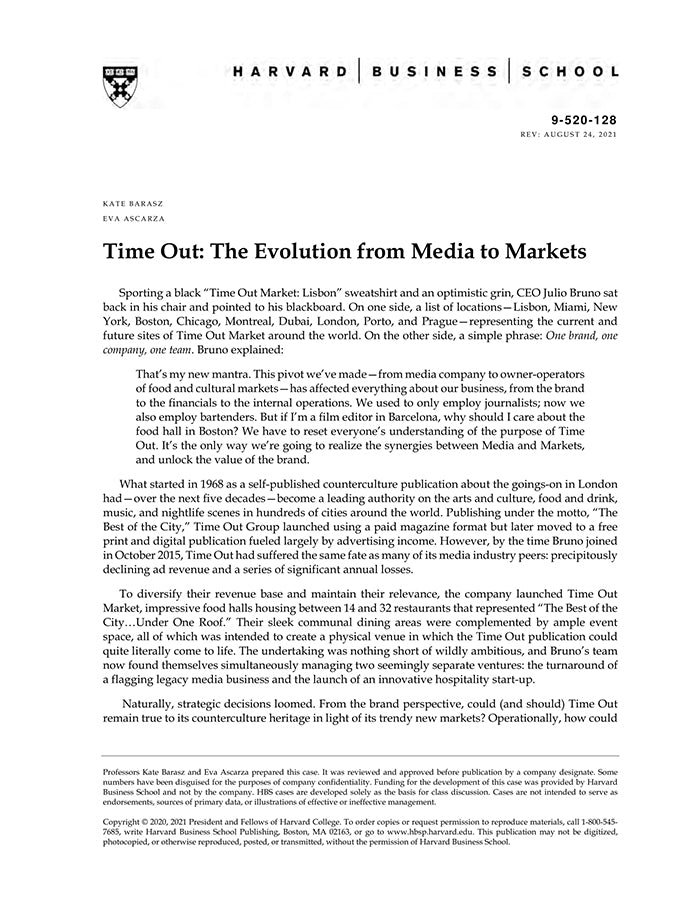Time Out: The Evolution from Media to Markets
受取状況を読み込めませんでした
In February 2020, Time Out's chief executive officer Julio Bruno is evaluating the strategic direction of the company. Over the span of five decades, Time Out - the global media and entertainment brand - had gone from a self-published counterculture publication in London to a leading authority on the arts and culture, food and drink, music, and nightlife scenes in hundreds of cities around the world. However, the rise of the internet meant fundamentally rethinking the type of content Time Out offered, and their historical reliance on media-generated revenue put them in a precarious position amidst an industry-wide "media apocalypse." To maintain relevance and diversify their revenue, the company launched Time Out Market, a collection of sleek food halls that housed between 14 and 32 restaurants and quite literally brought the Time Out Magazine to life. As a self-described "platform-agnostic" brand, the move marked Time Out's transition to "phyigital" (physical + digital) business, and promised the possibility of synergies between the Media and Market divisions. They initially opened Markets in six cities, with a long-term plan to expand much further. However, strategic questions loom. How should Time Out manage its global brand? How could they ensure that Media drove customers to the Markets, and vice versa? More existentially, what was the role of their legacy Media division going forward?
【書誌情報】
ページ数:17ページ
サイズ:A4
商品番号:HBSP-520128
発行日:2020/6/9
登録日:2021/2/19


